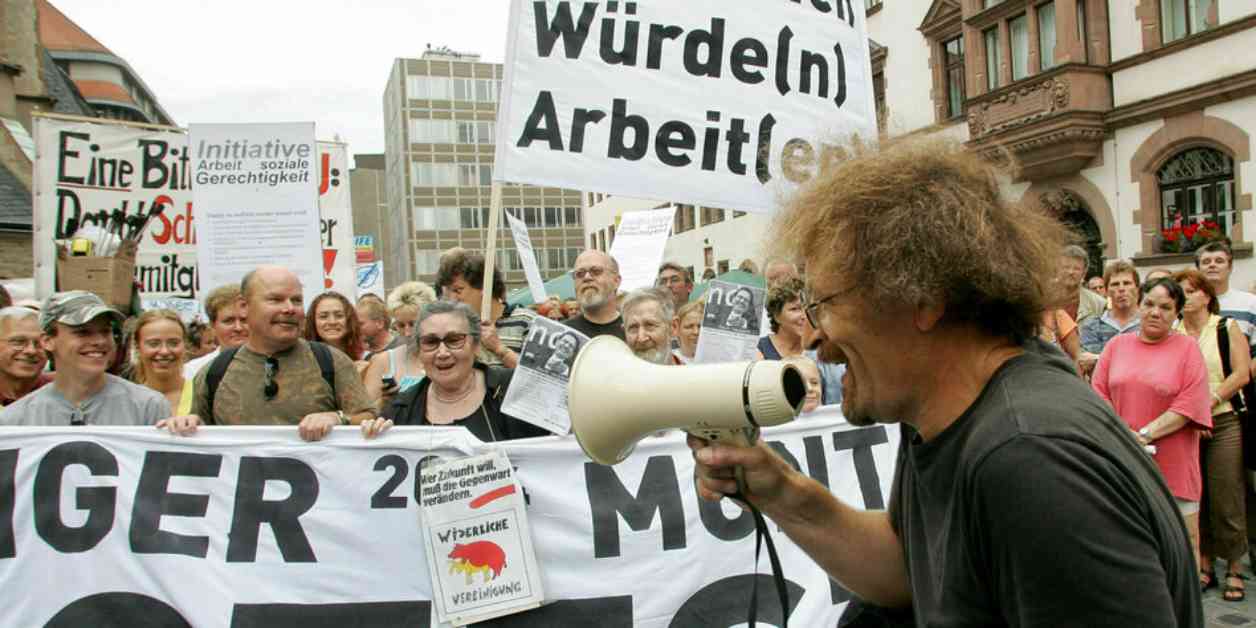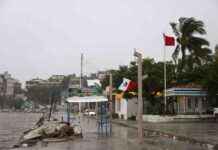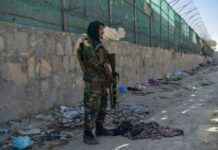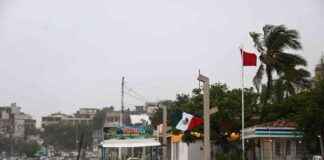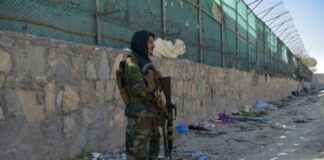Twenty years ago, thousands of people in the East took to the streets. Twenty years later, the law is called Bürgergeld – but the criticisms remain current.
The initiator of the Leipzig Monday demo, Winfried Helbig, speaks to the demonstrators in Leipzig on August 16, 2004. Photo: Eckehard Schulz/ap
The accusation of not wanting to work at the expense of the general public has hardly worn off even after 20 years: in 2023, Hartz IV was replaced by Bürgergeld, but the populist debates have remained.
The federal government wants to tighten sanctions, and the Union continues to taunt. On Monday, Saxony’s Prime Minister Michael Kretschmer (CDU) declared in the world that “thousands” could work, but received money from the state, “for which taxpayers work hard.” Twenty years ago, thousands in East Germany took to the streets against such accusations.
“End Hartz IV – because today us, tomorrow you.” This slogan was written by unemployed merchant Andreas Ehrholdt with a felt-tip pen on cardboard signs when he called for protests in Magdeburg at the end of July 2004. The Hartz IV law was set to enter into force on January 1, 2005. The core of the reform package named after VW personnel director Peter Hartz was to support and demand.
People were supposed to be supported in their job search, that is, supported. But through sanctions, those who allegedly made little effort to find a job were supposed to be disciplined. Many people felt degraded to recipients of state charity.
200,000 people on the street
On July 26, there were only a few hundred people who followed Ehrholdt’s call and took to the streets in Magdeburg. But that was about to change quickly. Throughout August, people in more and more East German cities participated in the Monday demonstrations, often in four-digit numbers. At the peak of the anti-Hartz protests on August 30, at least 200,000 people were on the streets in over 200 cities nationwide, especially in the East.
The number of protesters remained high for several weeks and only began to decline in October. In the meantime, all major media outlets in the country were dealing with the question of what was driving people in East Germany to the streets every Monday. Left-wing groups also watched in amazement as people in East Germany protested without their involvement, people who had never demonstrated before.
Lutz Neuber of the grassroots union Freie Arbeiterunion (FAU) was one of the few organized leftists on the street in Magdeburg on July 26, 2004. “When our small group of seven to eight people with our banners and slogans against Nazis, the state, and capital joined the maybe 300 participants in the demonstration, it was warmly welcomed,” Neuber recalls the euphoric mood after 20 years. “Our chants against low wages and forced labor were applauded. We thought, now it’s starting.”
However, on the second Monday demonstration in Magdeburg, disillusionment followed: the crowd had multiplied to over 6,000, Neuber recounts. “But this time, groups of the extreme right had taken the lead, and they, too, were defended by the masses. No one wanted to exclude anyone.”
The spark did not catch on
In many cities, however, the demonstrators refused to march with neo-Nazis. “Distancing from fascists was one of the fundamental principles of the Monday demonstrations,” says social scientist Harald Rein, who has been active in the independent unemployed movement for decades.
The fact that Hartz IV could not be prevented was also due to the fact that the spark did not jump to West Germany. There, left-wing groups initiated protests against Hartz IV in various cities, but they remained manageable. “Only the Monday demonstrations in East Germany in 2004 can be described as a spontaneous mass protest against Hartz IV,” says Rein.
There was potential: on November 1, 2003, over 100,000 people participated in a nationwide demonstration against Hartz IV in Berlin, organized by a few activists. Then, in the summer news drought, numerous people in East Germany spontaneously took to the streets against Hartz IV.
Although left-wing groups tried to organize further protests in the West for the fall of 2004, they rarely mobilized more than the left-wing scene – an exception was a demonstration in front of the Federal Employment Agency headquarters in Nuremberg with around 10,000 people in November.
“What work is reasonable for what wage”
Another reason the protests did not achieve their goal, according to sociologist Mag Wompel, was the unclear concept of justice among many Monday demonstrators. Many were outraged at being treated like welfare recipients – thus cementing the division.
“The widely anchored ideology of performance justice, through the latent acceptance of the human image of Agenda 2010, broke the resistance’s neck,” judges Wompel, who was involved in numerous protests as an editor for the online platform Labournet 20 years ago.
The introduction of Hartz IV was a massive incision, says the Unemployed Self-Help Group Oldenburg (ALSO), active in the unemployed movement for over 40 years. “What work is reasonable for what wage, how far the protection of privacy is guaranteed, which apartments are appropriate, how those affected and their children are provided for, how much fear and expectation of humiliations they must face in job centers and social welfare offices – this has set standards not only for the affected individuals themselves but for the entire coexistence in this society,” summarizes the self-help group. In such an environment, most people had little strength and time to participate in protest demonstrations.
But there were acts of solidarity. Initiatives emerged in many cities that accompanied the unemployed to their appointments at the job center so that they were not left alone in the bureaucratic process. The number of appeals against imposed sanctions also increased rapidly and were often successful. For the late unemployed activist Anne Allex, this was also a late consequence of the protests of the summer of 2004: “Many people learned to fight back back then.”
